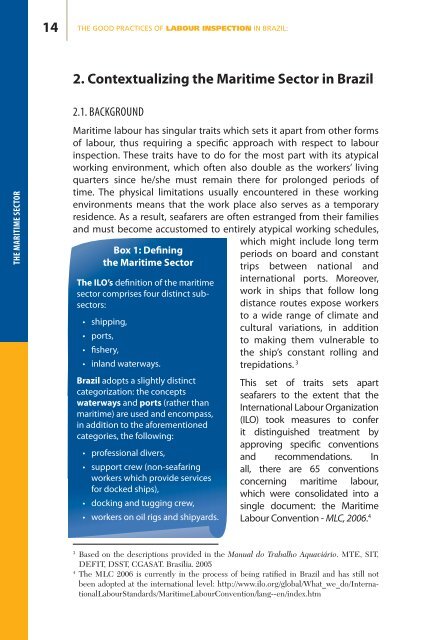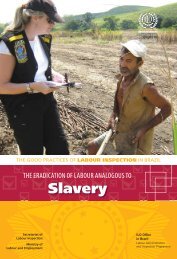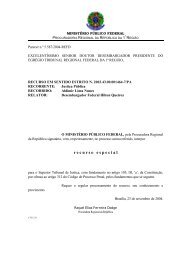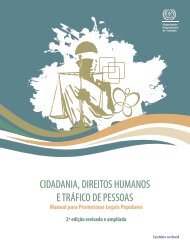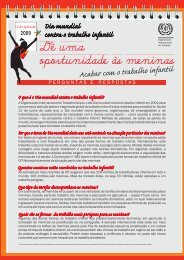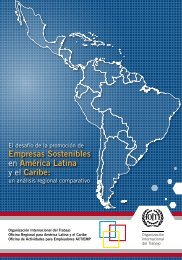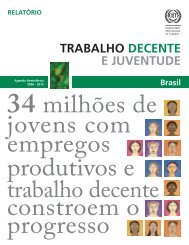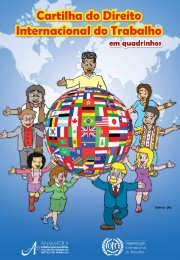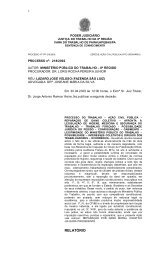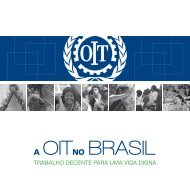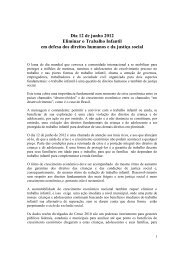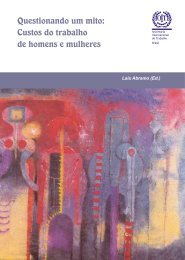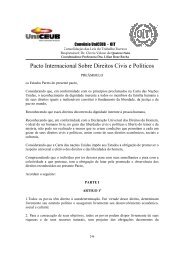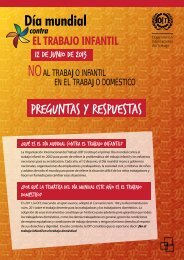The Maritime Sector
The Maritime Sector
The Maritime Sector
You also want an ePaper? Increase the reach of your titles
YUMPU automatically turns print PDFs into web optimized ePapers that Google loves.
14THE GOOD PRACTICES OF LABOUR INSPECTION IN BRAZIL:2. Contextualizing the <strong>Maritime</strong> <strong>Sector</strong> in BrazilTHE MARITIME SECTOR2.1. BACKGROUND<strong>Maritime</strong> labour has singular traits which sets it apart from other formsof labour, thus requiring a specific approach with respect to labourinspection. <strong>The</strong>se traits have to do for the most part with its atypicalworking environment, which often also double as the workers’ livingquarters since he/she must remain there for prolonged periods oftime. <strong>The</strong> physical limitations usually encountered in these workingenvironments means that the work place also serves as a temporaryresidence. As a result, seafarers are often estranged from their familiesand must become accustomed to entirely atypical working schedules,Box 1: Definingthe <strong>Maritime</strong> <strong>Sector</strong><strong>The</strong> ILO’s definition of the maritimesector comprises four distinct subsectors:• shipping,• ports,• fishery,• inland waterways.Brazil adopts a slightly distinctcategorization: the conceptswaterways and ports (rather thanmaritime) are used and encompass,in addition to the aforementionedcategories, the following:• professional divers,• support crew (non-seafaringworkers which provide servicesfor docked ships),• docking and tugging crew,• workers on oil rigs and shipyards.which might include long termperiods on board and constanttrips between national andinternational ports. Moreover,work in ships that follow longdistance routes expose workersto a wide range of climate andcultural variations, in additionto making them vulnerable tothe ship’s constant rolling andtrepidations. 3This set of traits sets apartseafarers to the extent that theInternational Labour Organization(ILO) took measures to conferit distinguished treatment byapproving specific conventionsand recommendations. Inall, there are 65 conventionsconcerning maritime labour,which were consolidated into asingle document: the <strong>Maritime</strong>Labour Convention - MLC, 2006. 43Based on the descriptions provided in the Manual do Trabalho Aquaviário. MTE, SIT,DEFIT, DSST, CGASAT. Brasília. 20054<strong>The</strong> MLC 2006 is currently in the process of being ratified in Brazil and has still notbeen adopted at the international level: http://www.ilo.org/global/What_we_do/InternationalLabourStandards/<strong>Maritime</strong>LabourConvention/lang--en/index.htm


